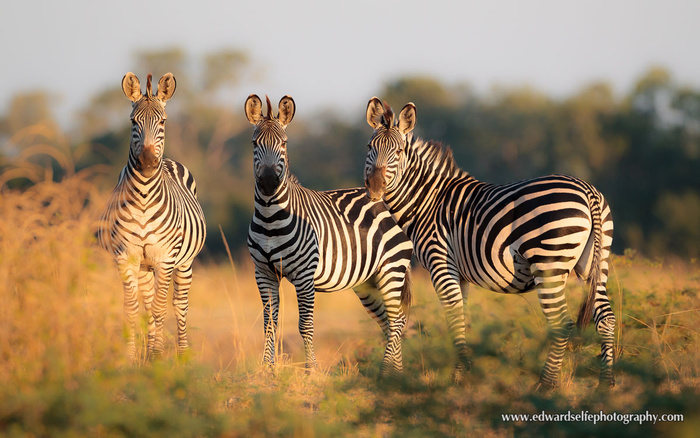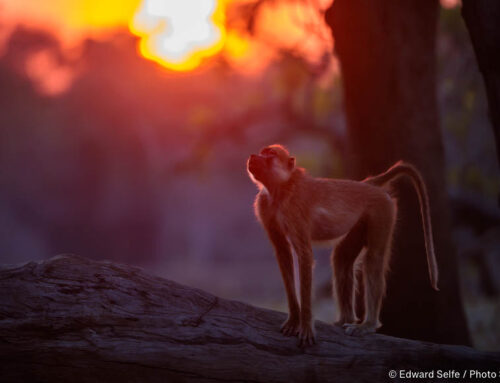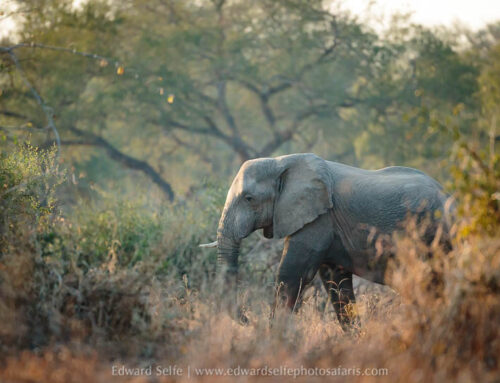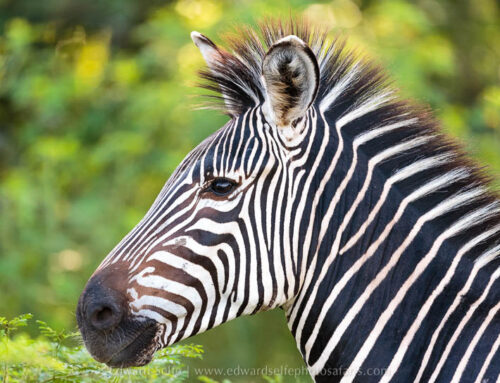Number 5: Giraffes along Luangwa
Canon EOS 1D Mark 3, 70-200mm f2.8 lens at f5.6, ISO 200, 1/2500sec, EV 0 and Evaluative metering.
For me, a photo is a winner when it shows wildlife in its environment and captures some beauty of composition at the same time. This image could only have been taken in the Luangwa, and anyone who has been here would immediately recognise these unique giraffes, and their equally unique surroundings.
We spent a long time waiting for this shot. The giraffes appeared out of the bushes to our right, and we knew that they were heading for a drink at the river’s edge, as they do most days. But the trick was to guess where they would head to and be in the right place for when they got there; starting the vehicle and moving while they were approaching the water might spook them and set back the process.
We were fortunate that they chose a spot where we were well positioned to catch them drinking and that they arranged themselves nicely for the right moment. So often with group photos you get one who decides to show a rear-end at the wrong moment!
I closed my lens down to f5.6 to ensure that there was sufficient depth of field for the group, and then watched carefully for framing; in the heat of the moment (while watching necks, heads and legs to choose a nice moment) it’s easy to stray from your original plan and end up with a composition that doesn’t work….here’s the water in front of the group and circling round behind them adds balance to the final shot.
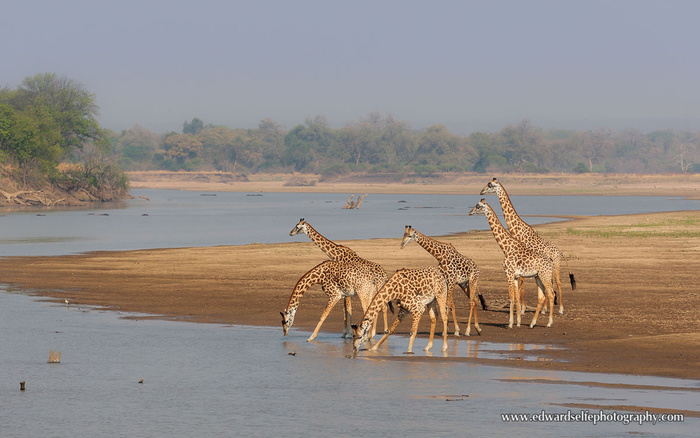
Number 4: Impala Gully
Canon EOS 1DX, 500mm f4 lens at f4, ISO 800, 1/1600sec, EV 0 and Evaluative metering.
A technique that I work on with my clients on a photo safari is to consider very carefully what “else” is in the frame, before you click the shutter. It’s true, there are a lot of things to think about, but it’s amazing how often a unintended branch, stick, piece of wood or tree ends up in a photo because the photographer was otherwise occupied trying to keep the focus point in the right place and watching the shutter speed…!
One of the unintended benefits of this technique is that it often teaches photographers to look more carefully at the “empty” space in their images, and sometimes use it to good effect. I found that it was possible to employ this idea in this situation with an impala.
These drainage gullies (formed when bends in the river are cut off and leave ox-bow lagoons which flood in the rains) are prime hunting grounds for leopard who use them to sneak up on prey. So antelope are always wary when approaching them, knowing that they are at much higher risk than elsewhere. In fact, when grass is plentiful, you will find that everywhere has been mowed by the grazers up to around 1 metre from the edge of the gully – no one wants to venture too close!
I parked in the bottom of the gully and we framed shots of this impala looking imperiously down!
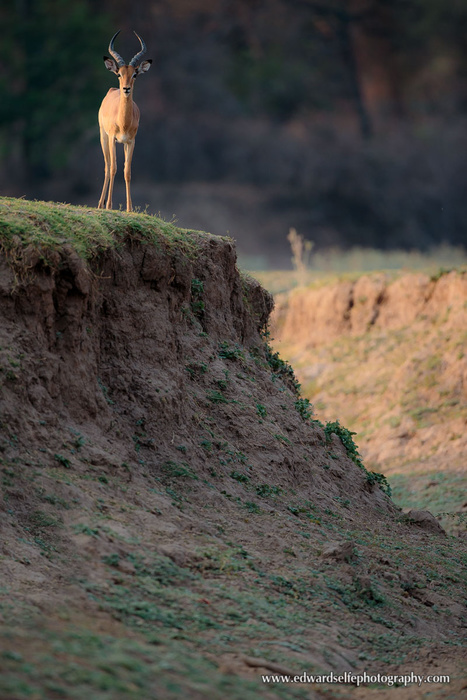
Number 3: Running for Cover
Canon EOS 1DX, 500mm f4 lens at f4, ISO 200, 1/4000sec, EV 0 and Evaluative metering.
Impala – and any prey species for that matter – hate to be trapped against the water. Entering the river means certain death at the mouths of crocodiles (don’t believe me? I once saw a zebra swim the river and get no further than one third of the way across before being dragged under) so they prefer to keep an escape route back to dry land.
Knowing this about them, I drove down to our river-crossing point, but just slightly faster than I might normally. They had all finished drinking and were milling around before heading up the bank. Under slight pressure from the approaching vehicle, they ran (rather than sauntering) across the sand, kicking out and jumping with thirst-quenched-vigour. We were ready for them (I had briefed my guests on the plan) and we took a series of shots of them on the run.
I love this for the apparent weightlessness of the trailing impala and the rich colours of the late dry season. 1/4000sec was plenty to freeze the action which was important to get a sharp, crisp image. It would also have worked with a motion blur, but in such bright light, getting a shutter speed slow enough to create blur (1/60 – 1/100 sec) would have been near impossible.
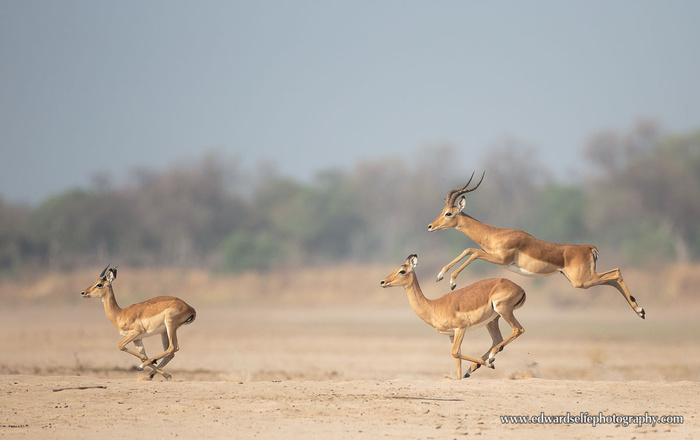
Number 2: What’choo lookin’ at?
Canon EOS 1D Mark 4, 500mm f4 lens at f5.6, ISO 400, 1/800sec, EV 0 and Evaluative metering.
One of the earliest sightings I had when I first bought a large telephoto lens was this very friendly warthog. He was cropping grass at the side of the road and barely lifted his head when I stopped nearby.
He even let me drop down from the vehicle and take a shot of him from his level – a hugely beneficial angle when photographing small wildlife. The main problem I faced here was getting enough depth of field – at that range (20 metres perhaps) the depth of field with long lenses is very small (< 10cm). I stopped down to f5.6 but even so, I barely had enough; only his nose and front of his snout are in true focus. For small prints, his eyes are sharp enough, but I learned the lesson for next time.
When watching animals close up, and composing portraits, you’ll need a much larger depth of field than you think. A recent sighting of lions feeding on buffalo led me to use f11 for portraits of the lionnesses feeding. Stopping down f4 to f11 cuts the light to 1/8 of the original, so be sure to adjust ISO afterwards to maintain shutter speed.
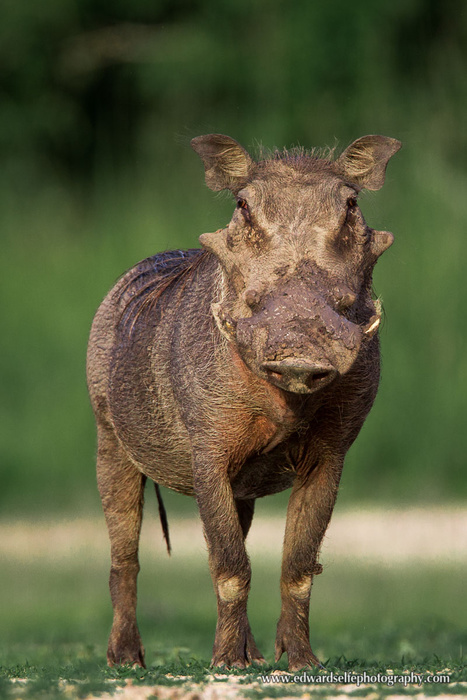
Number 1: Zebra Trio
Canon EOS 1D Mark 4, 500mm f4 lens at f5, ISO 800, 1/1250sec, EV 0 and Evaluative metering.
The final image in this series is one of my favourite images of all – and it also has a nice story to it as it was taken with my wife just after our wedding!
We found a trio of zebra stallions grazing on the shelf – an area of floodplain alongside the river – which were intermittently sparring and playing. Knowing that they were stallions from their behaviour, we guessed we could get close to them without spooking them.
Indeed, they did stand still and merely observed me when I got out and approached them on my belly! The low angle gave me a chance to include some of the foreground foliage which gives depth to the image, and by crawling slightly to my left, I made the light approach from the side of the subjects, giving them more definition.
Stopping down the aperture gives a bit more depth of field in case I mis-judged the spread of the group. Finally the golden light of evening finished everything off beautifully – that was one thing that I didn’t control, but is almost guaranteed for 150 days in Luangwa’s dry season – come and experience it for yourselves!
So there we have it, my favourite 5 Mammals photos and how I achieved them. I hope that is has been interesting and perhaps inspires some to bring their cameras to the Luangwa Valley and try it for themselves!!
